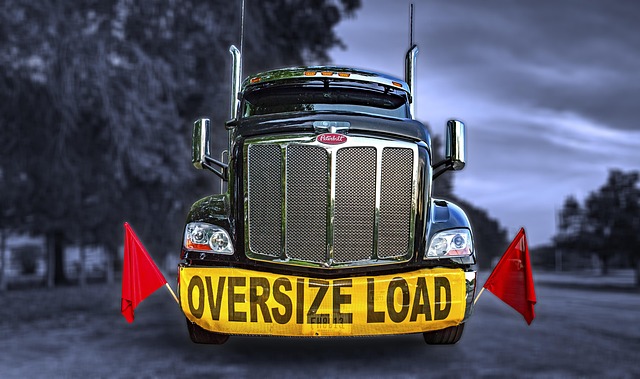Looking to register your car in California? This comprehensive guide walks you through the entire process, ensuring a smooth experience. From understanding crucial registration requirements to gathering essential documents and even using a VIN verifier for accurate checks, we’ve got you covered. Learn how to choose the right registration class, pay associated fees, and submit your application with ease. By following these steps, you’ll be on your way to legal California car ownership in no time.
- Understand California Car Registration Requirements
- Gather Necessary Documents for Vehicle Registration
- Verify Vehicle Identification Number (VIN) with Authorized Agencies
- Choose an Appropriate Registration Class and Pay Fees
- Submit Application and Receive Your Registration Papers
Understand California Car Registration Requirements

Before diving into the registration process, understanding California’s car registration requirements is essential. The state mandates that all vehicles operated on its roads be properly registered and inspected to ensure they meet safety and environmental standards. One key component of this process involves a Vehicle Identification Number (VIN) inspection, which helps verify the vehicle’s authenticity and history.
In California, a VIN inspection is typically conducted by an authorized service center or dealership using a mobile VIN verifier. This tool cross-references the VIN with national databases to uncover any potential issues, such as odometer rollback or prior damage. By utilizing these resources, California residents can ensure their vehicle’s registration complies with state regulations and enjoy peace of mind on the road.
Gather Necessary Documents for Vehicle Registration

Before starting the registration process, ensure you have all the required documents for a smooth transaction. The key document is the Vehicle Identification Number (VIN) verifier, which confirms the vehicle’s authenticity and history. This can usually be obtained from the manufacturer or through a mobile VIN inspection service. Additionally, you’ll need proof of ownership, such as a title or bill of sale, along with any applicable fees and taxes. A valid driver’s license is also essential for registration.
For out-of-state residents registering their vehicles in California, further documentation may be necessary, including a current registration from the previous state. It’s advisable to check with the California Department of Motor Vehicles (DMV) for a comprehensive list of requirements and to explore options like mobile VIN verification for added convenience during the registration procedure.
Verify Vehicle Identification Number (VIN) with Authorized Agencies

Before proceeding with the car registration process, it’s crucial to ensure your vehicle’s Vehicle Identification Number (VIN) is legitimate and matches the make and model of your car. This step involves using a reliable VIN verifier to cross-reference the number against authorized databases. Many online tools and mobile apps, such as mobile VIN verifiers, offer quick and easy VIN inspections that compare your VIN with official records. These services can help you avoid potential issues like odometer rollback fraud or reporting a vehicle with a history different from what you expected.
For added assurance, consider reaching out to the California Department of Motor Vehicles (DMV) or trusted third-party agencies specializing in VIN verification. They can validate the VIN’s accuracy and condition, ensuring it matches the details provided by the seller or manufacturer. This extra layer of scrutiny not only protects you from legal complications but also guarantees a smooth registration process for your new vehicle.
Choose an Appropriate Registration Class and Pay Fees

When registering your car in California, the first step is to determine the appropriate registration class for your vehicle. The state offers several classes based on factors like the type and age of your car, as well as its intended use. The correct classification ensures you pay the right fees.
These fees vary depending on the class and can be paid online or at a California Department of Motor Vehicles (DMV) office. It’s essential to consider additional costs for special plates or additional services. Utilizing a mobile VIN verifier can streamline the process, allowing you to verify your vehicle’s information quickly and efficiently from the comfort of your home.
Submit Application and Receive Your Registration Papers

After you’ve gathered all the necessary documents and completed your vehicle’s safety inspection, it’s time to submit your application. You can do this online or in person at a California Department of Motor Vehicles (DMV) office. If submitting online, ensure your vehicle’s information is accurate and matches the details on your title and insurance papers. For an easier process, consider using a mobile vin verification service, which allows you to complete much of the paperwork from the comfort of your home.
Once submitted, the DMV will review your application and, if approved, will issue your registration papers. These documents are crucial and must be kept up-to-date at all times. Remember to keep track of important dates, such as when your registration needs renewal. You can also opt for a mobile vin inspection service to have your vehicle’s information verified on the go, ensuring a smooth registration process every time.
Registering a car in California involves understanding specific requirements, gathering essential documents, and completing a straightforward application process. By verifying your Vehicle Identification Number (VIN) with authorized agencies and selecting the appropriate registration class, you can ensure a smooth experience. Remember to keep your registration papers up-to-date for legal compliance and hassle-free driving. Utilize a VIN verifier as a crucial step in this process to stay informed and secure.
